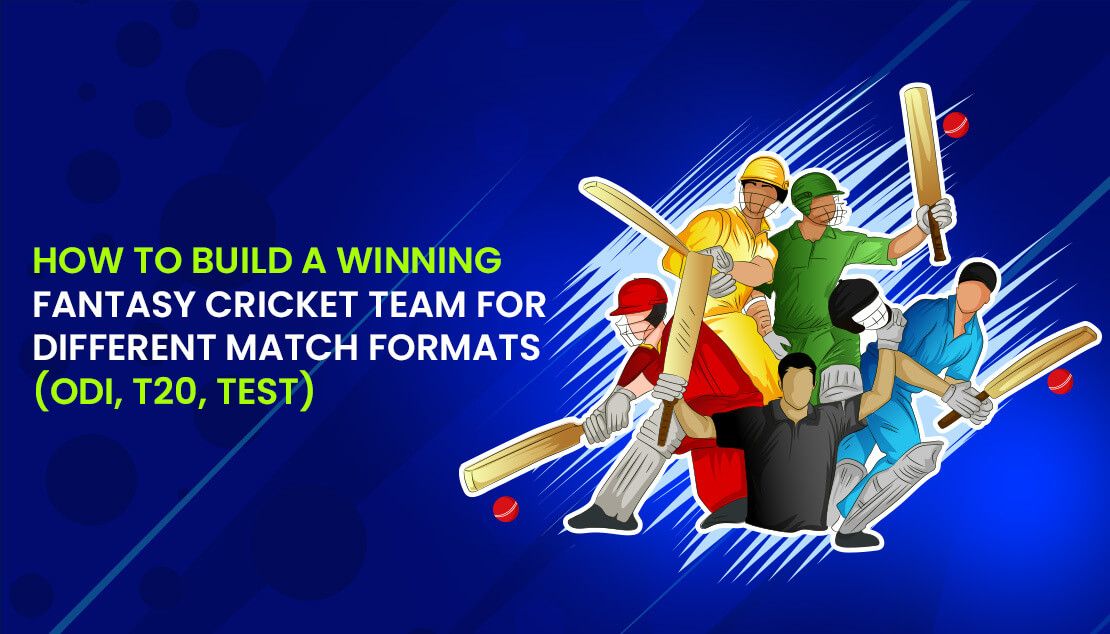
When it comes to fantasy cricket, what works in a T20 may fail in a Test match.
Every cricket format has its rhythm, pace, and tactical requirements. If you want to win consistently, your fantasy team should reflect that. A winning fantasy approach assembles a team suitable for the match format, pitch conditions, player roles, and current form.
Want to know how to select winning fantasy cricket team? Begin by learning how fantasy points are allocated in each format, how powerplays and field restrictions work, and how to take advantage of player mismatches.
This article lays down the best team-building tactics for each format, allowing you to build smarter, format-specific fantasy teams.
Learning how to select winning fantasy cricket team requires a strategic approach that takes into account the different aspects that influence player performance. Here are some key fantasy cricket tips and tricks for improving your team selection:
Creating a winning fantasy cricket team in ODIs needs a deep understanding of the game’s rules and dynamics. Consider these fantasy cricket tips and tricks:
Each team faces 50 overs, striking a balance between the quick speed of T20s and the endurance of Test matches.
Emphasise the All-Rounders: Their numerous abilities can considerably increase your team’s total score.
In the fast-paced T20 cricket, building a winning fantasy team necessitates a smart strategy adapted to the format’s specific requirements.
Each team has a single innings of 20 overs, emphasising aggressive play and swift scoring.
First 6 Overs: Only two fielders are allowed outside the 30-yard circle, giving batsmen plenty of opportunities to score.
Creating a successful fantasy team for Test cricket, the longest format, requires a planned approach that meets the demands of five-day matches.
Test matches last five days and allow each team to bat and bowl twice, emphasising endurance and consistency.
Unlike limited-overs formats, Test cricket has no formal powerplay restrictions. Field placements can be altered depending on match situations.
Creating a great fantasy cricket squad requires intelligent selection across multiple positions. Here’s a quick guide to position-specific strategies:
When learning how to predict the total score in cricket, even skilled fantasy gamers fall into avoidable traps that cost them points. Here are the most popular ones:
Fantasy cricket success is more than simple luck; it’s a game of strategy, research, and game awareness. Each format — whether the fast-paced T20, the balanced ODI, or the long grind of Test matches — demands a distinct team-building strategy.
Concentrate on elements such as player performance, pitch conditions, and cricket ODI powerplay rules. Don’t go in blind; start small, assess results, and fine-tune your plan over time. Platforms such as Gamesys11 provide a safe environment for enthusiasts to hone their talents and enjoy the competition.
With the appropriate mindset and constant work, learning how to select a winning fantasy cricket team can become a fruitful experience.
Learning how to select winning fantasy cricket team depends on aspects like the match format, pitch and weather conditions, and player form. Always back your captain and vice-captain selections with data.
Pick bowlers suited to the format: death-over bowlers in T20s, strike pacers in ODIs, and spinners in Test matches. Look for those with recent wicket-taking form.
It is very important. A keeper can earn fantasy cricket points through catches, stumpings, and runs. Batting wicket-keepers add extra value, especially in limited-overs formats.
Powerplays influence scoring patterns. Pick aggressive batsmen for early overs in T20s/ODIs and bowlers who thrive under field restrictions to maximise points.
